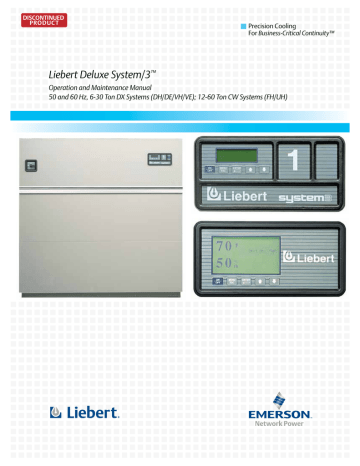4.13.3 Compressor Sequencing Control. Vertiv Liebert Deluxe System 3, Refrigerator DH, DE, DH, VH, VE
Add to My manuals80 Pages
advertisement
▼
Scroll to page 2
of
80
advertisement
Key Features
- Microprocessor-based controls for precise temperature management
- Advanced load control features to optimize energy efficiency
- Remote monitoring capabilities for real-time system status updates
- Sequential load activation to minimize inrush current
- Short cycle control to prevent compressor damage
- Built-in diagnostics for easy troubleshooting
- Non-volatile memory to retain settings during power outages
Related manuals
Frequently Answers and Questions
How do I access the advanced microprocessor controls?
To access the advanced microprocessor controls, press the 'Menu' button on the control panel.
Can I monitor the system status remotely?
Yes, the Deluxe System 3 supports remote monitoring via a web interface or SNMP.
How do I set the temperature setpoints?
To set the temperature setpoints, navigate to the 'Setpoints' menu in the advanced microprocessor controls.
What is sequential load activation?
Sequential load activation is a feature that starts compressors in sequence to reduce the inrush current and minimize the load on the electrical system.
How do I troubleshoot system issues?
The Deluxe System 3 has built-in diagnostics that can help identify and troubleshoot system issues.
advertisement
